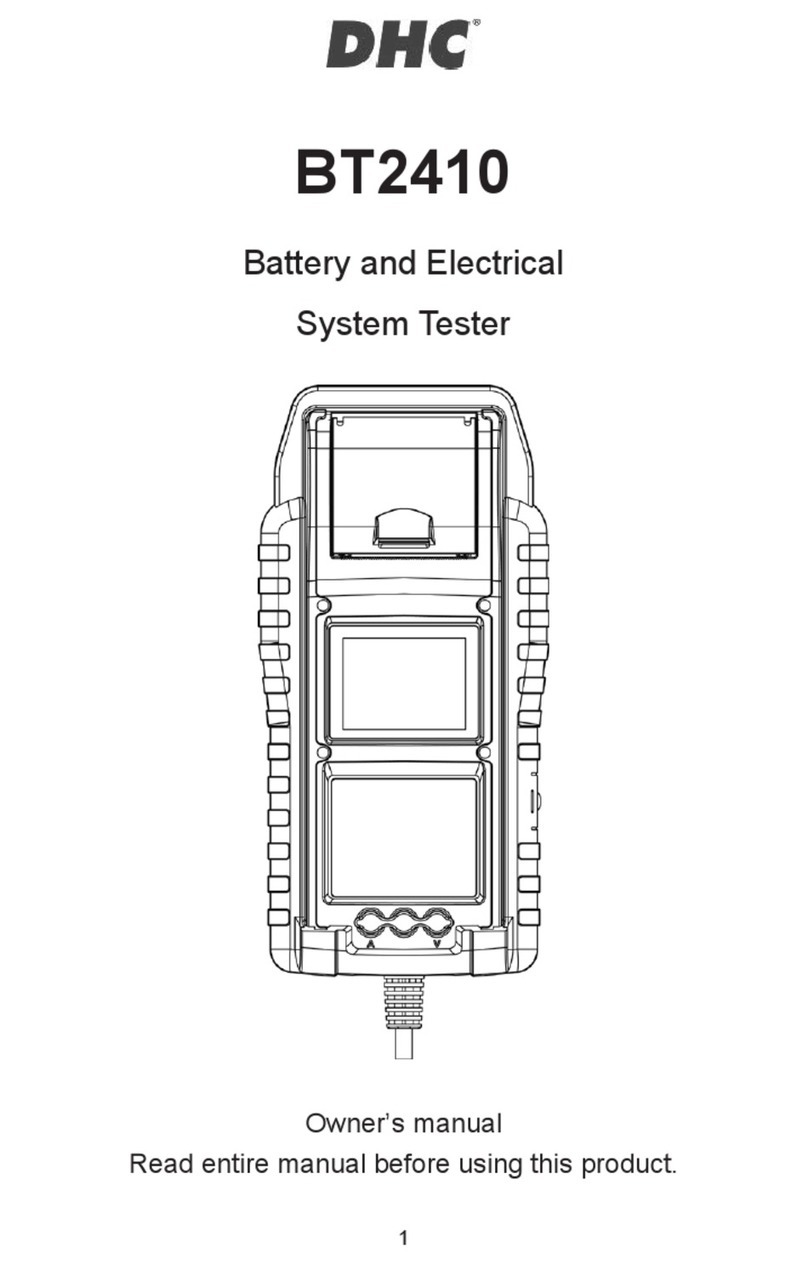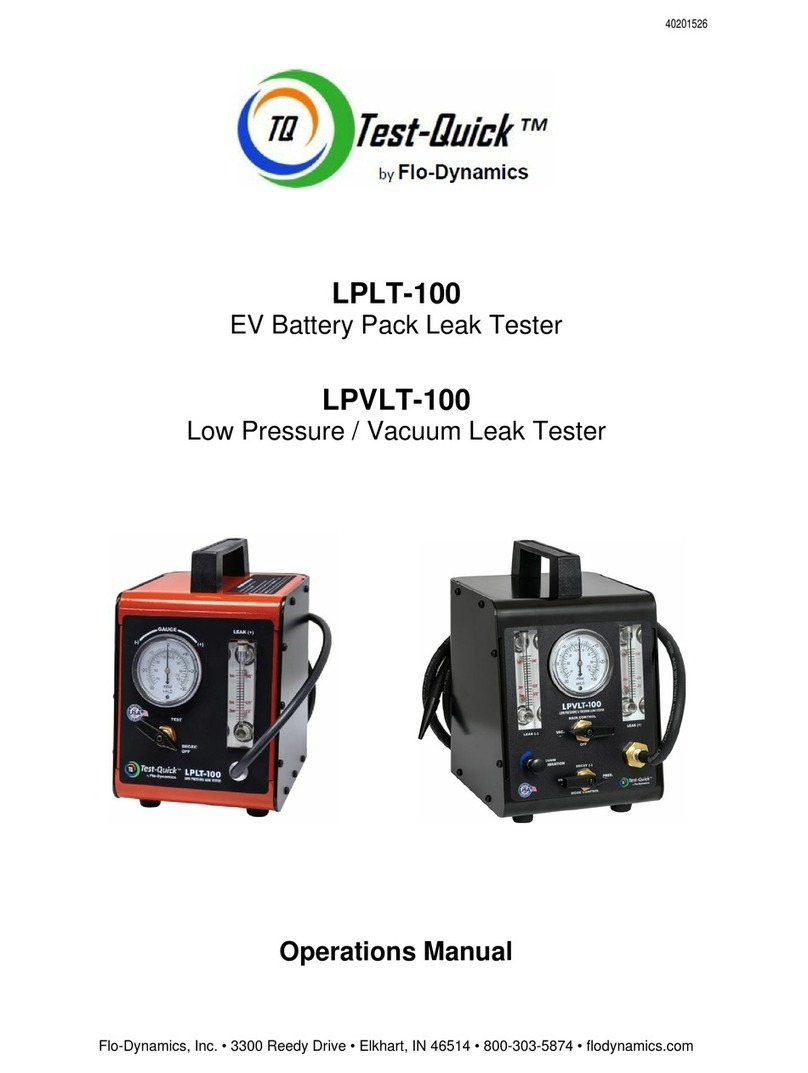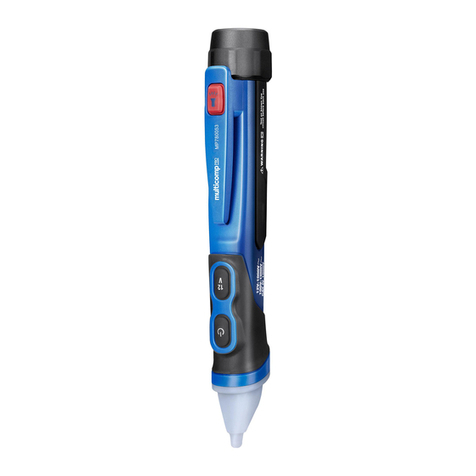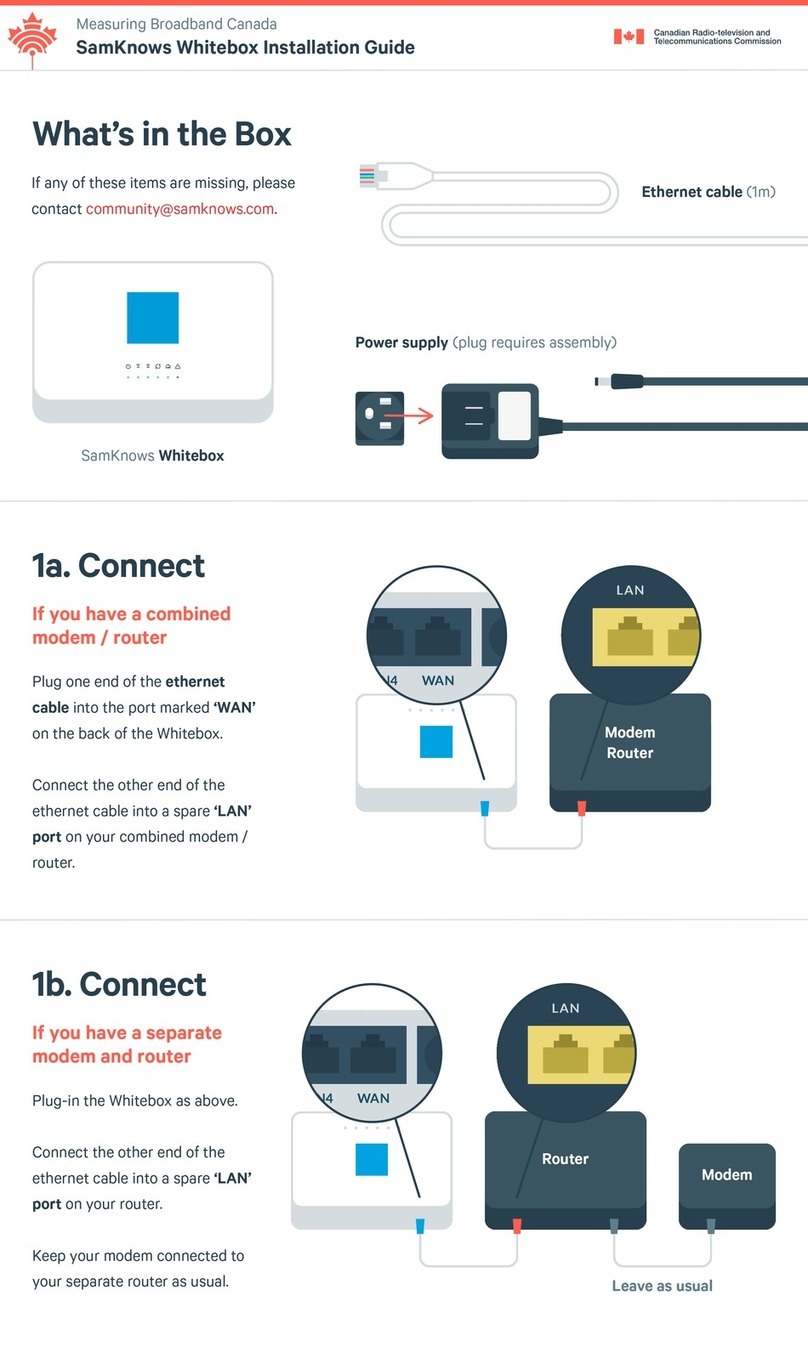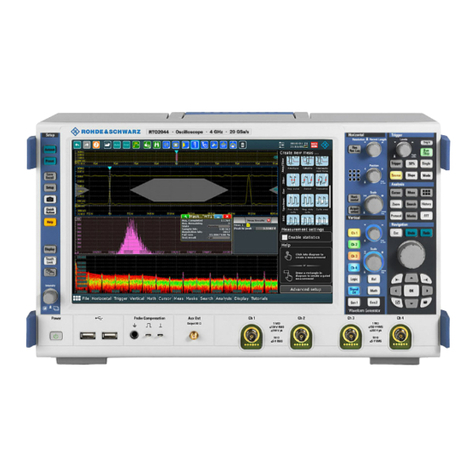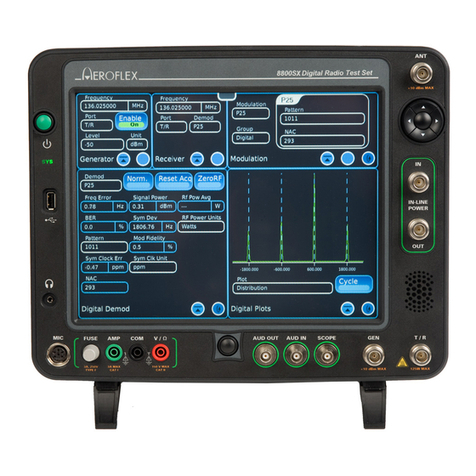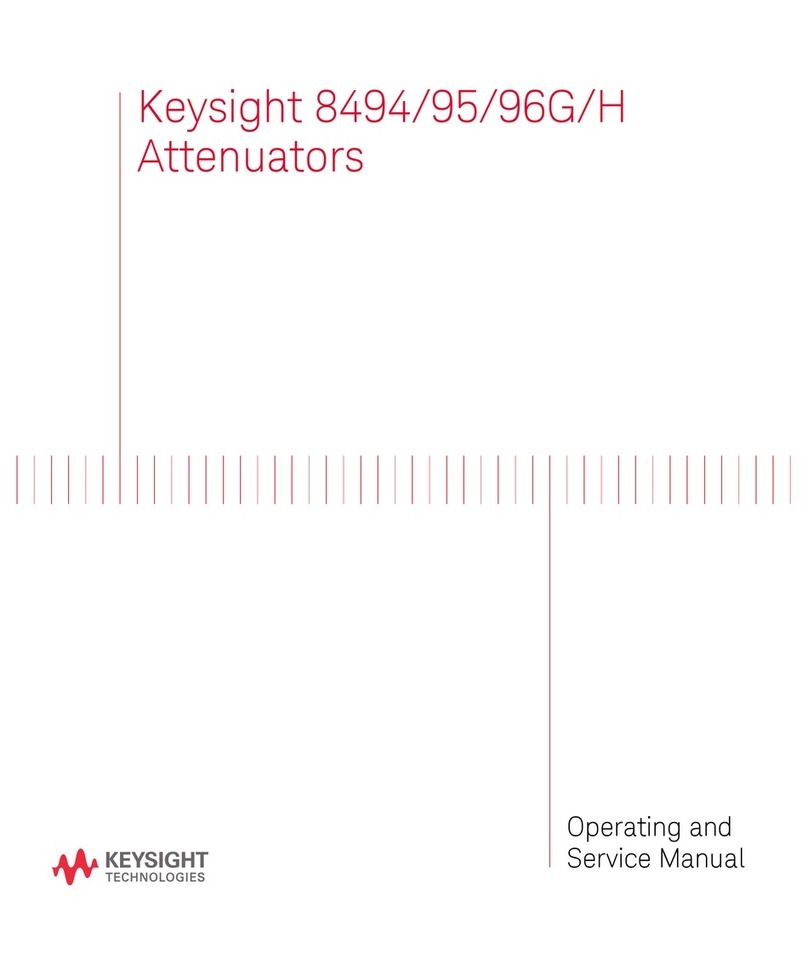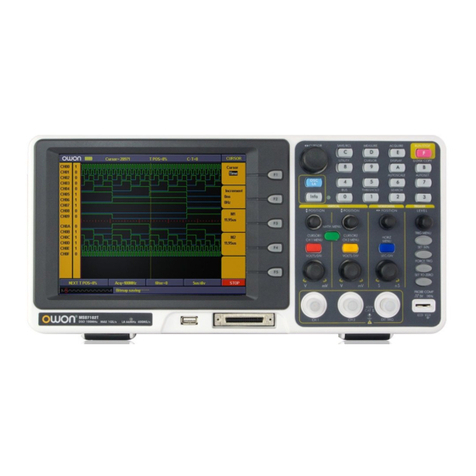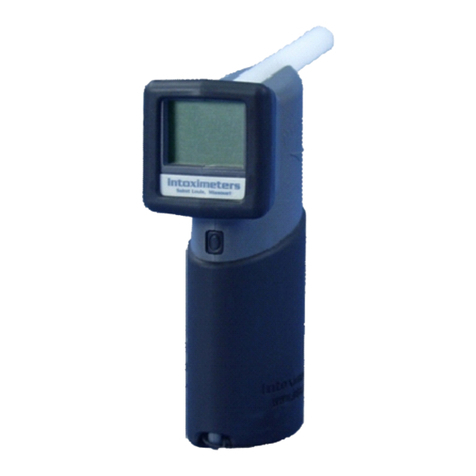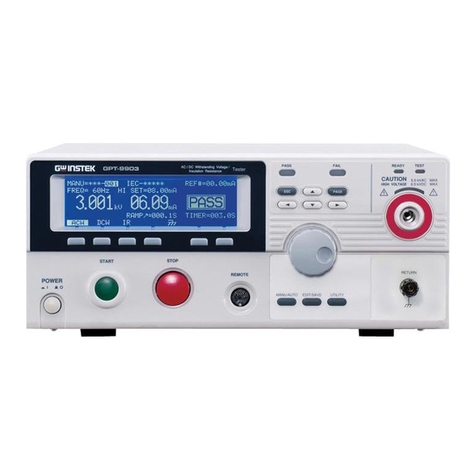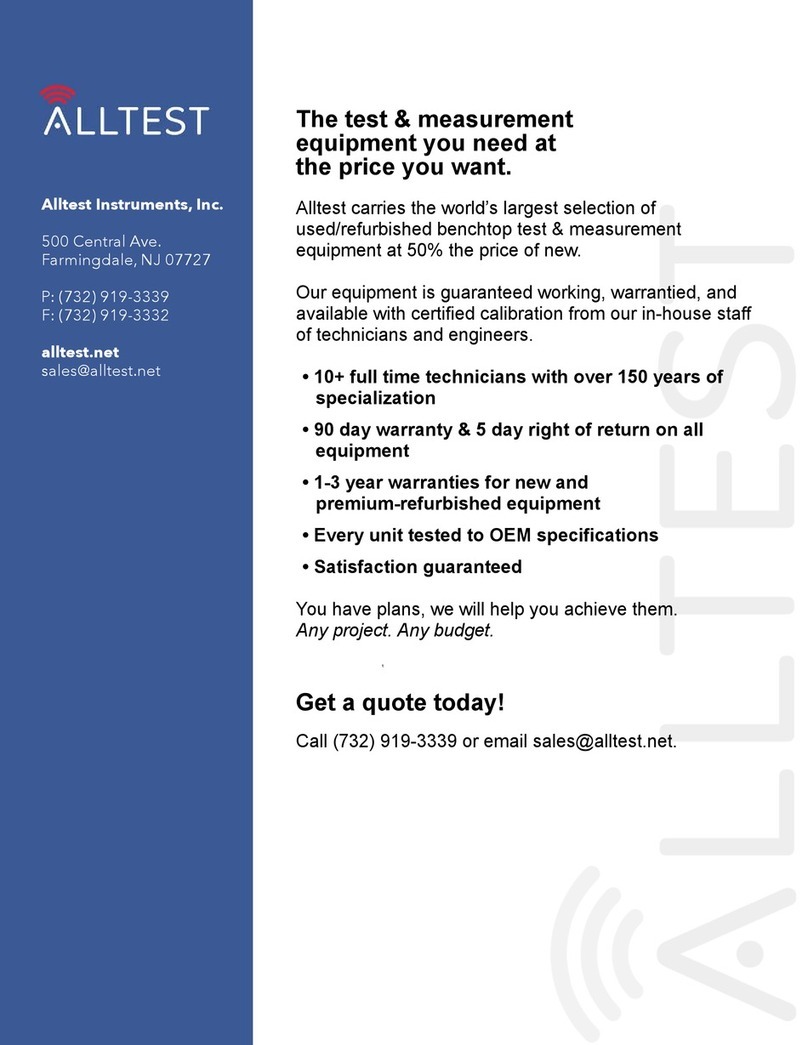DHC BTW300 User manual

BTW300
6V/12V Wireless Battery and System Tester
OWNERS MANUAL
English
...................
02
Deutsch.......................16
Español
.....................31
Français
................... 44
Italiano
................. 60
Português
.............73

• 2 •
ENGLISH Original instructions
BTW300
6V/12V Wireless Battery and System Tester
OWNERS MANUAL
READ THE ENTIRE MANUAL BEFORE USING THIS PRODUCT.
FAILURETO DO SOCOULDRESULTINSERIOUSINJURYORDEATH.
IMPORTANT: READ AND SAVE THIS SAFETY AND INSTRUCTION MANUAL.
SAVE THESE INSTRUCTIONS –This manual will show you how to use your
tester safely and effectively. Please read, understand and follow these instructions
and precautions carefully, as this manual contains important safety and operating
instructions. The safety messages used throughout this manual contain a signal
word, a message and an icon.
The signal word indicates the level of the hazard in a situation.
Indicates an imminently hazardous situation which, if not avoided, will
result in death or serious injury to the operator or bystanders.
Indicates a potentially hazardous situation which, if not avoided, could
result in death or serious injury to the operator or bystanders.
Indicates a potentially hazardous situation which, if not avoided, could
result in moderate or minor injury to the operator or bystanders.
Indicates a potentially hazardous situation which, if not avoided, could
result in damage to the equipment or vehicle or property damage.
* Radio Frequency Range: 2.402GHz ~ 2.480GHz
* Maximum Radio Frequency Transmitted Power: 4.18dBm

• 3 •
WARNING WARNING
RISK OF
ELECTRIC
SHOCK
OR FIRE.
1.1 Read the
entire manual before using this product.
Failure to do so couldresult in serious
injury or death.
1.2 This tester is not intended for use
by persons (including children) with
reduced physical, sensory or mental
capabilities, or lack of experience
and knowledge, unless they have
been given supervision or instruction
concerning the use of the tester bya
person responsible for their safety.
1.3 Do not operate the tester if it has
received a sharp blow, been dropped
or otherwise damaged in any way;take
it to a qualified serviceperson.
1.4 Do not disassemble the tester; take
it to a qualified service personwhen
service or repair is required. Incorrect
reassembly may result in a risk of fire
or electricshock.
RISK OF EXPLOSIVE
GASES.
1.5 WORKING IN THE
VICINITY OF A LEAD-ACID
BATTERYIS DANGEROUS.
BATTERIES GENERATEEXPLOSIVE
GASES DURING NORMAL BATTERY
OPERATION. FOR THIS REASON, IT
IS OF UTMOST IMPORTANCE THAT
YOU FOLLOW THE INSTRUCTIONS
EACH TIME YOU USE THE TESTER.
1.6 Toreduce the risk of a battery
explosion, follow these instructions
and those published by the battery
manufacturer and the manufacturer
ofanyequipmentyouintendtousein
thevicinityofthebattery.Reviewthe
cautionarymarkingsontheseproducts
andontheengine.
2. PERSONAL PRECAUTIONS
RISK OF EXPLOSIVE
GASES.
2.1
NEVER smoke or allow a
spark or flame in the vicinity of
a battery orengine.
2.2
Remove personal metal items such
as rings, bracelets, necklaces and
watches when working with a lead-acid
battery. A lead-acid battery canproduce
a short-circuit current high enough to
weld a ring or the like to metal, causing
a severe burn.
2.3
Be extra cautious, to reduce the risk of
droppingametaltoolontothebattery.It
mightsparkorshort-circuitthebatteryor
other electrical part that may cause an
explosion.
1. IMPORTANT SAFETY INSTRUCTIONS –SAVE THESE INSTRUCTIONS.
This manual contains important safety and operating instructions.
WARNING
WARNING

• 4 •
2.4
Consider having someone nearby to
come to your aid when you work near a
lead-acid battery.
2.5
Have plenty of fresh water and soap
nearby in case battery acid contacts
your skin, clothing or eyes.
2.6
Wear complete eye and body
protection, including safety goggles and
protective clothing. Avoid touching your
eyes while working near thebattery.
2.7
If battery acid contacts your skin or
clothing,immediatelywashthearea
with soap and water. If acid enters
your eye, immediately flood the eye
with cold running water for at least
10minutes andgetmedicalattention
right away.
2.8
If battery acid is accidentally
swallowed, drink milk, the whites
of eggs or water. DO NOT induce
vomiting. Seek medical attention
immediately.
2.9
WARNING:Thisproductcontainsone
ormore chemicals known tothe State
ofCaliforniatocausecancerandbirth
defectsorotherreproductiveharm.
3. PREPARING THE BATTERY
RISK OF
CONTACT WITH
BATTERY ACID.
BATTERY ACID
IS A HIGHLY
CORROSIVE SULFURIC ACID.
3.1 Be sure the area around the battery
is well ventilated while the battery is
beingtested.
3.2 Clean the battery terminals. Be careful
to keep corrosion from coming in
contactwithyoureyes,noseandmouth.
3.3 Inspect the battery for a cracked or
broken case or cover. If the batteryis
damaged, do not use thetester.
3.4 If the battery is not a sealed
maintenance-free battery, check the
level of each cell and if necessary,
add distilled water until the battery
acid reaches the level specified by
the manufacturer. This helps purge
excessive gas from the cells. Do not
overfill.
3.5 If it is necessary to remove the battery
from the vehicle to test it, always
remove the ground terminal from the
battery first. Make sure all accessories
in the vehicle are off to ensure you do
not cause any arcing.
WARNING WARNING

• 5 •
4. FEATURES
1 2 3 4 5 1. Battery clamps
2. Connected (blue) LED
3. Power (green) LED
4. Trouble (red) LED
5. Reset powerbutton
5. INSTALLING THE APP
5.1 Downloadandinstall theApp:“DHC
Sync”. (Apple store or Google Play).
Look for the icon.
NOTE: For Apple devices, requires iOS
8.0 or later; Android devices, OS 4.3
or later.
5.2 NEW USERSETUP
When using the App for the first time,
you must complete Registration.
1.Run the App onyour mobile device.
2. Select "NEW USER".
3. Fill in all of the requiredfields,
and then checkthe box for “AGREE
TO TERMS AND CONDITIONS“.
Press “CONTINUE”.
4. Log in: Enter the email address
provided during registration.
Check the box for “REMEMBER
ACCOUNT”. Press “LOG IN”.

• 6 •
6. CONNECTING THE TESTER
6.1
Before you test a battery in a vehicle,
turnofftheignition,allaccessoriesand
loads. Close all of the vehicle’s doors
and trunklid.
6.2
Make sure the battery terminals are
clean. Use awire brush toclean them,
if necessary. NOTE: This tester works
best if the battery connectors have
been removed and the battery posts
havebeencleaned.Anycorrosion
between the tester clamps and the
battery connectors, or between the
battery connectors and the battery
posts, will degrade the tester’s
efficiency.
6.3
Connect the positive (red) clamp to
the positive (POS, P,+) battery post.
Connectthenegative(black) clampto
the negative (NEG, N,-)battery post.
7. OPERATING INSTRUCTIONS
7.1 BATTERY TEST
1. Run the App on your mobile
device and login.
2. Press “Scan+” in the upper right
corner of the HOME screen. (If
theTEST icon is red, the tester is
connected; noneed to proceedto
Scan+.)
4. When connected, press
“CONNECTED CONTINUE”.
The systemwill scan and find the
tester.
3. Once the tester shows on the
screen, select “Press To Start” to
connect.
CONNECTEDCONTINUE

• 7 •
7. Press “START TEST” to begin
testing.
The tester is shown and the TEST
block is now red, indicating that the
tester is connected and ready
for testing. 6.
P
r
e
s
s
“
S
T
In this screen, the user may create a
name for the tester. Swipe the “TEST
>” area of the active tester to bring
up the Edit option.
5. Press “TEST” to enter the testing
process.
6. Select “batterytest”.
Set uptestoneachiconto select
BatteryType, RatingandSet
Capacity(or RatedCCA).
At any time in the process, press
“< ” to return to the previous screen.

• 8 •
8. Confirm whether the battery has
been charged. 10. Press “EMAIL /TEXT RESULTS”,
and then select the application. NOTE:
Your mobile device must have E-Mail or
Text/SMS capability to use the
EMAIL/TEXT RESULTS function.
9. The test report isdisplayed.
11. Results will be sent.
User may select “RETEST
BATTERY”.

• 9 •
7.2 SYSTEM TEST
1.
Follow steps 1-6 for "BATTERYTEST".
2. From theTEST menu, select
Select Battery Type, Rating and
Set Capacity (or RatedCCA).
3. Press “START TEST” to begin the
system test.
At any time in the process, press
“< ”toreturntothe previous screen.
4. Follow all screenprompts.
5. The test report is displayed.

• 10 •
6. Press “EMAIL /TEXT RESULTS”,
and then select the application.
NOTE: Your mobile device must
have E-Mail or Text/SMS capability
to use the EMAIL/TEXT RESULTS
function.
7. Results will be sent.
7.3 EV BATTERYTEST
1.
Follow steps 1-6 for "BATTERYTEST".
2. From the TEST menu, select
“EV BATTERY TEST”.
4. Follow all screen prompts.
5. The test report is displayed.
6. Press “EMAIL /TEXT RESULTS”,
and then select the application.
NOTE: Your mobile device must
have E-Mail or Text/SMS capability
to use the EMAIL/TEXT RESULTS
function.
7. Results will be sent.
7.4 START-STOP TEST
1.
Follow steps 1-6 for "BATTERYTEST".
2. From the TEST menu, select
Set up the test by swiping up ordown
on each column to select the battery
brand andmodel.
3. Press “START TEST” to
begin testing. At any time in the
process, press“< ”toreturntothe
previous screen.
Set up test by swiping up or down on
each column to select Battery Type,
Rating and Set Capacity(or Rated CCA)
3. Press “START TEST” to begin
testing.

• 11 •
4. Follow all screen prompts.
5. The test report is displayed.
6. Press “EMAIL /TEXT RESULTS”,
and then select the application.
NOTE: Your mobile device must
have E-Mail or Text/SMS capability
to use the EMAIL/TEXT RESULTS
function.
7. Results will be sent.
7.5 ACCESSING TEST RECORDS
1. From the HOME screen,
scroll down and select "TEST
RECORDS".
2. Select from stored test records
to view, email/text ordelete.
8. SPECIFICATIONS
Wireless connectivity ............................................... Bluetooth 4.0 class 2 (BLE)
Internal battery............................................ Lithium ion battery 3.7 V, 1150 mAh
Operation range.................................................................40~2,000 (CCA/SAE)
Voltage range....................................................................................... 1.5V~32V
Rating system .................................................................SAE, DIN, EN, IEC, CA
Wireless connection range...........................................................10m (32.8 feet)
Ingress protection rating ...............................................................................IP65
Cable length....................................................................................................20˝
Product dimension (L x W x H) ............................................3.88˝ x 2.75˝ x 1.13˝
Weight (with clamps)................................................................................ 11.5oz

• 12 •
9. LIMITED WARRANTY
WARRANTYTERMSANDCONDITIONS
DHC Speciality Corporation (the “Manufacturer”) or the resellers authorized
by the Manufacturer (the “Reseller”) warrant this Tester (the “Product”) for eighteen
(18) months, according to the following stipulations.Any and all warranties, other
than the warranty included herein, are hereby expressly disclaimed and excluded
to the fullest extent permissible under applicable law. Legislation may imply
warranties or conditions or impose obligations on Manufacturer which cannot be
excluded, restricted or modified in relation to consumer goods.
Consumer End-User Warranty
Any claims under this warranty must be communicated to Reseller within 2
months after discovery of the non-conformity.
Resellers/Professional End-User Warranty
The Manufacturer provides a limited warranty for hidden defects or non-conformities.
This warranty is subject to the followingconditions:
a.
The Manufacturer only warrants hidden defects in material or workmanship
presentintheirrootcauseatthemoment ofthefirstsalebytheManufacturer;
b.
Manufacturer’s obligation under this warranty is limited to repairing or
replacing the Product with a new or reconditioned unit at the sole option of
the Manufacturer;
c.
Manufacturerdoes not have any warrantyobligationsif theallegeddefectswere
causedby abnormal usage, fair wear and tear,unauthorizeduseof the Product
or use of the Product differing from the description in the applicable manual or
other specifications given by the Manufacturer, insufficient care, repairs carried
out by personsor entities or withpartsnot approvedby Manufacturer,poorcare,
accidents, unauthorized changes or modifications, incorrect transport, storage
or treatment of theProduct;
d.
In order to exercise this right, the Product must be returned completeand in its
original state and packaging, with mail costs prepaid, along with proof of
purchase to the Manufacturer or its authorized representatives in order for repair
or replacement tooccur.

• 13 •
Common Warranty Provisions
The warranty mentioned above only applies to the first professional or consumer
user having legally acquired the Product from the Manufacturer or a Reseller. No
warranty is extended towards clients, agents or representatives of those buyers.
The Product is sold under the specifications, for the use and purpose in
accordance with the provisions of this manual, with express exclusion and
disclaimer of warranty of any other specifications, uses and purposes.
Authorized Resellers are prohibited from making any statements or providing any
warranty in excess of the above warranties Non-authorized resellers may only
sell the product under the condition that they assume all warranty obligations with
the total exclusion of any warranty provided by the Manufacturer.
Manufacturer does not provide any warranty for any accessories used with the
Product that are not manufactured by Schumacher Electric Corporation.
This warranty does not exclude or diminish any claims the Manufacturer may
have against the distributors of The Product.
THE MANUFACTURER NEITHER ASSUMES NOR AUTHORIZES ANYONE TO
ASSUME OR MAKE ANY OTHER OBLIGATION TOWARDS THE PRODUCT
OTHER THAN THIS WARRANTY.
Warranty, Repair Service and Distribution Centers:
North America Office,
Johnson City, TN 37604
423-646-6697
Drock52496@aol.com
Taiwan: Head Office
8F, No.308, Datong Rd., Xizhi Dist.,22146
+886 2-2641-7399
service@dhc.com.tw
DHC®
and the DHC logo
are registered trademarks of DHC Specialty Corporation.

• 14 •
FCC INFORMATION
This product contains transmitter FCC ID SH6MDBT40.
WARNING: Changes or modifications to this unit not expressly approved by the party
responsible for compliance could void the user’s authority to operate the equipment.
This equipment has been tested and found to comply with the limits for a Class B
Digital Device, pursuant to Part 15 of the FCC Rules. These limits are designed
to provide reasonable protection against harmful interference in a residential
installation. This equipment generates, uses, and can radiate radio frequency
energy and, if not installed and used in accordance with the instructions, may
cause harmful interference to radio communications. However, there is no
guarantee that interference will not occur in a particular installation. If this
equipment does cause harmful interference to radio or television reception, which
can be determined by turning the equipment off and on, the user is encouraged to
try to correct the interference by one or more of the followingmeasures:
•Reorient or relocate the receivingantenna.
•Increase the separation between the equipment andreceiver.
•Connect the equipment into an outlet on a circuit different from that to which the
receiver is connected.
•Consult the dealer or an experienced radio/TV technician forhelp.
This equipment complies with Part 15 of the FCC Rules. Operation is subject to
the following two conditions:
1. This equipment may not cause harmfulinterference.
2. This equipment must accept any interference received, including interference
that may cause undesiredoperation.
This equipment complies with FCC radiation exposure limits set forth for an
uncontrolled environment. This equipment should be installed and operated with
minimum 20cm between the radiator and your body. This transmitter must not be
collocated or operating in conjunction with any other antenna or transmitter unless
authorized to do so by the FCC.
Modifications not authorized by the manufacturer may void the user’s authority
to operate this device. This equipment complies with FCC RF radiation exposure
limits set forth for an uncontrolled environment. This transmitter must not be co-
located or operating in conjunction with any other antenna or transmitter.

• 15 •
CANADIAN REGULATION INFORMATION
CAN ICES-3 (B)/NMB-3(B)
Contains transmitter module IC: 8017A-MDBT40, Hardware Version Identification
Number (HVIN): MDBT40
This device complies with Industry Canada license exempt RSS standard(s).
Operation is subject to the following two conditions: (1) this device may not
cause interference, and (2) this device must accept any interference, including
interference that may cause undesired operation of the device.
Under Industry Canada regulations, this radio transmitter may only operate
using an antenna of a type and maximum (or lesser) gain approved for the
transmitter by Industry Canada. To reduce potential radio interference to other
users, the antenna type and its gain should be so chosen that the equivalent
isotropically radiated power (e.i.r.p.) is not more than that necessary for successful
communication.

• 16 •
DEUTSCH Ü bersetzung der ursprünglichenAnweisungen
BTW300
6V/12V Drahtloser Batterie- und Systemprüfer
BETRIEBSANLEITUNG
LESENSIEDASGESAMTEHANDBUCH,BEVORSIEDIESES
PRODUKT VERWENDEN. WENN SIEDIESNICHT TUN,KÖ NNEN
SCHWERE VERLETZUNGEN ODER GARTOD DIE FOLGESEIN.
WICHTIG: LESEN SIE DIESE SICHERHEITS- UND BEDIENUNGSANLEITUNG
UND BEWAHREN SIE DIESE AUF.
BEWAHREN SIE DIESE ANLEITUNG AUF –Dieses Handbuch zeigt Ihnen, wie Sie
Ihren Prüfer sicher und effektiv einsetzen. Da dieses Handbuch wichtige Sicherheits-
undBedienungsanweisungenenthält,lesen,erfassenundbefolgenSiebittesorgfältig
dieseAnweisungenund Vorsichtsmaßnahmen. DieindiesemHandbuchverwendeten
SicherheitsinformationenenthalteneinSignalwort,eineMeldungundeinSymbol.
Das Signalwort bezeichnet die Gefahrenstufe in einer Situation.
Bezeichnet eine unmittelbar drohende gefahrvolle Situation, die, sofern
sie nicht verhindert wird, zum Tod oder schweren Verletzungen des
Bedieners oder von Umstehenden führt.
Bezeichnet eine potenziell gefahrvolle Situation, die, sofern sie nicht
verhindert wird, zum Tod oder schweren Verletzungen des Bedieners
oder von Umstehenden führen könnte.
Bezeichnet eine potenziell gefahrvolle Situation, die, sofern sie nicht
verhindert wird, zu mittelschwerer oder geringfügiger Verletzung des
Bedieners oder von Umstehenden führenkönnte.
Bezeichnet eine potenziell gefahrvolle Situation, die, sofern sie nicht
verhindert wird, zu einer Beschädigung der Geräte oder des Fahrzeugs
oder zu Vermögensschaden führen könnte.
* Radiofrequenzbereich: 2.402GHz ~ 2.480GHz
* Maximale Sendefrequenz für Hochfrequenz: 4,18 dBm
WARNUNG
WARNUNG

• 17 •
WARNUNG
RISIKO EINES
STROMSCHLAGS
ODER VON
FEUER.
1.1 Lesen Sie das gesamte Handbuch,
bevorSiediesesProduktverwenden.
Wenn Sie dies nicht tun, können
schwere Verletzungen oder gar Tod
die Folgesein.
1.2 Dieser Prüfer ist nicht zur Verwendung
durch Personen (einschließlich
Kinder)mitvermindertenkörperlichen,
sensorischen oder geistigen
Fähigkeiten oder fehlender Erfahrung
undSachkenntnisvorgesehen,es
sei denn, ihnen wird bezüglich der
Verwendung des Prüfers von einer
für ihre Sicherheit verantwortlichen
PersoneineAufsicht zuteil oderihnen
wurdenAnweisungengegeben.
1.3 Betreiben Sie den Prüfer nicht nach
einem schweren Schlag, wenn er
heruntergefallen ist oder anderweitig
beschädigt wurde. Bringen Sie
ihn in einen solchen Fall zu einem
qualifizierten Servicetechniker.
1.4 Zerlegen Sie den Prüfer nicht.
Bringen Sie ihn zu einem
qualifizierten Servicetechniker,
wenn ein Kundendienst oder eine
Reparatur erforderlich ist. Ein falsches
Zusammenbauen kann zu Brandgefahr
oder einem Stromschlag führen.
GEFAHR EXPLOSIVER GASE.
1.5 DAS ARBEITEN
IN DER NÄHE EINER
BLEIBATTERIEIST
GEFÄHRLICH. BATTERIEN
ERZEUGEN WÄHREND DES
NORMALEN BATTERIEBETRIEBS
EXPLOSIVE GASE. AUS DIESEM
GRUND IST ES VON GRÖ SSTER
WICHTIGKEIT, DASS SIE DIESE
ANWEISUNGEN BEI JEDER
VERWENDUNG DES PRÜ FERS
BEFOLGEN.
1.6 Um das Risiko einer Explosion der
Batterie zu reduzieren, halten Sie sich
an diese Anweisungen und an die, die
vom Hersteller der Batterie und vom
Hersteller von Geräten herausgegeben
werden,dieSieinderNähederBatterie
verwendenmöchten.AchtenSieaufdie
Sicherheitskennzeichnungenaufdiesen
ProduktenunddemMotor.
1. WICHTIGE SICHERHEITSHINWEISE –
BEWAHREN SIE DIESE ANWEISUNGEN AUF.
Dieses Handbuch enthält wichtige Sicherheits- und Bedienungsanweisungen.
WARNUNG

• 18 •
2. PERSÖ NLICHE VORSICHTSMASSNAHMEN
GEFAHR EXPLOSIVER GASE.
2.1 Rauchen Sie NIEMALS
in der Nähe einer Batterieoder
eines Motors und vermeiden
Sie Funken oder Flammen.
2.2 Nehmen Sie Metallgegenstände
wie Ringe, Armbänder, Ketten
und Uhren ab, wenn Sie mit
einer Bleibatterie arbeiten. Eine
Bleibatterie kann Kurzschlussstrom
erzeugen, der ausreicht, um einen
Ring oder dergleichen mit Metall zu
verschweißen, wodurch eine schweren
Verbrennung verursacht wird.
2.3 Seien Sie besonders vorsichtig, um
die Gefahr, dass ein Metallwerkzeug
auf die Batterie fällt, zu vermindern.
Dies kann Funkenbildung oder einen
Kurzschluss der Batterie oder anderer
elektrischer Teileverursachen und zu
einer Explosion führen.
2.4 Sie sollten eine Person in Ihrer Nähe
haben, die Ihnen zur Hilfe kommen
kann, wenn Sie mit einer Bleibatterie
arbeiten.
2.5 Sorgen Sie dafür, dass sich reichlich
Frischwasser und Seife in der Nähe
befinden, falls Batteriesäure mit Ihrer
Haut, Kleidung oder Ihren Augen in
Kontakt gerät.
2.6 TragenSieeinenvollständigenAugen-
und Körperschutz einschließlich
Schutzbrille und Schutzkleidung.
Vermeiden Sie, Ihre Augen zu
berühren, während Sie in der Nähe
derBatteriearbeiten.
2.7 Wenn Batteriesäure mit Ihrer Haut oder
Kleidung in Berührung kommt, waschen
Sie den Bereich umgehend mit Wasser
und Seife. Wenn Säure in die Augen
gelangt, spülen Sie dieAugen sofort mit
fließendem, kaltemWasser mindestens
10 Minuten lang aus und suchen Sie
anschließend einen Arztauf.
2.8 Wenn Batteriesäure versehentlich
verschluckt wird, trinken Sie Milch,
Eiklar oder Wasser. FÜHREN Sie KEIN
Erbrechen herbei. Suchen Sie sofort
einen Arztauf.
2.9 WARNUNG:DiesesProduktenthält
einen oder mehrere Chemikalien,
diedem BundesstaatKalifornienals
krebserregendundalsVerursacher
vonGeburtsfehlernodersonstigen
reproduktiven Schäden bekannt sind.
WARNUNG

• 20 •
3. VORBEREITUNG DER BATTERIE
GEFAHRDES
KONTAKTS MIT
BATTERIESÄ URE.
BATTERIESÄ URE
IST EINE STARK
Ä TZENDE SCHWEFELSÄ URE.
3.1 Vergewissern Sie sich, dass der
Bereichum dieBatteriegut belüftetist,
währendsiegeprüftwird.
3.2 Reinigen Sie die Batteriekontakte.
Achten Sie darauf, dass korrosive
Partikel nicht mit Ihren Augen,Ihrer
Nase und Ihrem Mund in Kontakt
geraten.
3.3 Inspizieren Sie die Batterie im
Hinblick auf ein brüchiges oder
beschädigtes Gehäuse bzw. eine
brüchige oder beschädigte Hülle.
Verwenden Sie den Prüfen nicht,
wenn die Batterie beschädigtist.
3.4 Sofern es sich bei der Batterie nicht
um eine verschlossene wartungsfreie
Batterie handelt, prüfen Sie den
Füllstand jeder Zelle und, falls
notwendig, füllen Sie destilliertes
Wasser auf, bis die Batteriesäure
den vom Hersteller angegebenen
Füllstand erreicht. Dies unterstützt
dabei, überschüssiges Gas aus den
Zellen abzuführen. Nichtüberfüllen.
3.5 Sofern es erforderlich ist, die Batterie
zur Prüfung aus dem Fahrzeug zu
entnehmen, entfernen Sie stets
zuerst die Erdungsklemme von
der Batterie. Stellen Sie sicher,
dass sämtliche Zusatzgeräte im
Fahrzeug ausgeschaltet sind, um
zu gewährleisten, dass Sie keinen
Funkendurchschlag verursachen.
4. FUNKTIONEN
1. Batterieklemmen
2. Angeschlossen (blau) LED
3. Strom (grün) LED
4. Problem (rot) LED
5. An-/Aus-Schalter rücksetzen
WARNUNG

• 21 •
5. INSTALLATION DER APP
5.1 Laden Sie die App herunter und
installieren Sie diese: „DHC Sync“.
(Apple Store oder Google Play).
Achten Sie auf das Symbol .
HINWEIS: Für Apple-Geräte: erfordert
iOS 8.0 oder höher; Android-Geräte:
Android-OS 4.3 oder höher.
5.2 EINRICHTEN NEUER BENUTZER
Wenn Sie die App erstmalig nutzen,
müssen Sie die Registrierungerledigen.
1. Ö ffnen Sie die App aufIhrem
Mobilgerät.
2. Wählen Sie „NEUER
BENUTZER“ aus.
3. Füllen Sie sämtliche Mussfelder
aus und kreuzen Sie dann
das Kästchen „BITTE DEN
GESCHÄFTSBEDINGUNGEN
ZUSTIMMEN“ an. Drücken Sie auf
„FORTSETZEN“.
4. Anmelden: Geben Sie die bei der
Registrierung angegebene E-Mail-
Adresse an. Kreuzen Sie das
Kästchen „KONTO
SPEICHERN“ an. Drücken Sie auf
„ANMELDEN“.
6. ANSCHLIESSEN DES PRÜ FERS
6.1
Schalten Sie die Zündung, sämtliche
Zusatzgeräte und Verbraucher aus,
bevor Sie eine Batterie in einem
Fahrzeug prüfen,. Schließen Sie
sämtlicheTürendes Fahrzeugs unddie
Heckklappe.
6.2
Stellen Sie sicher, dass die
Batterieklemmen sauber sind.
Verwenden Sie, sofern notwendig,
eineDrahtbürstezu derenReinigung.
HINWEIS: Dieser Prüfer funktioniertam
Besten,wenndieBatterieanschlüsse
entfernt und die Batteriepole gereinigt
wurden. Jegliche Korrosion zwischen
den Klemmen des Prüfers und den
Batterieanschlüssen oder zwischen
den Batterieanschlüssen und den
Batteriepolen schwächt die Wirksamkeit
des Prüfers.
6.3
Schließen Sie die (rote) Plusklemme
anden Pluspol(POSP, +) der Batterie
an. Schließen Sie die (schwarze)
Minusklemme an den Minuspol (NEG,
N, -) der Batteriean.
Table of contents
Languages:
Other DHC Test Equipment manuals
Popular Test Equipment manuals by other brands
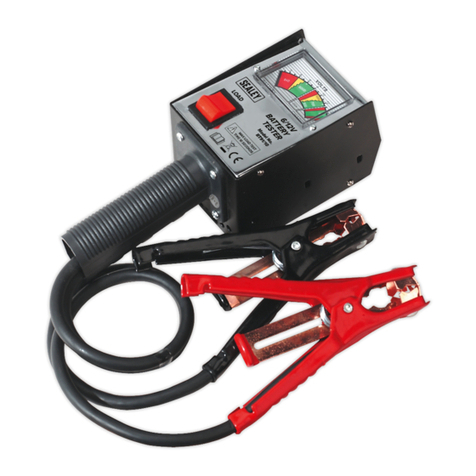
Sealey
Sealey BT91/10 instructions
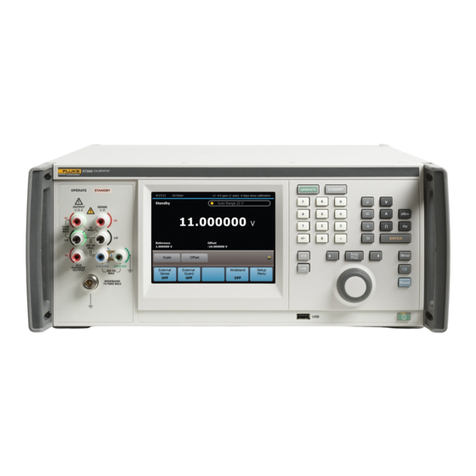
Fluke Calibration
Fluke Calibration 5730A Operator's manual
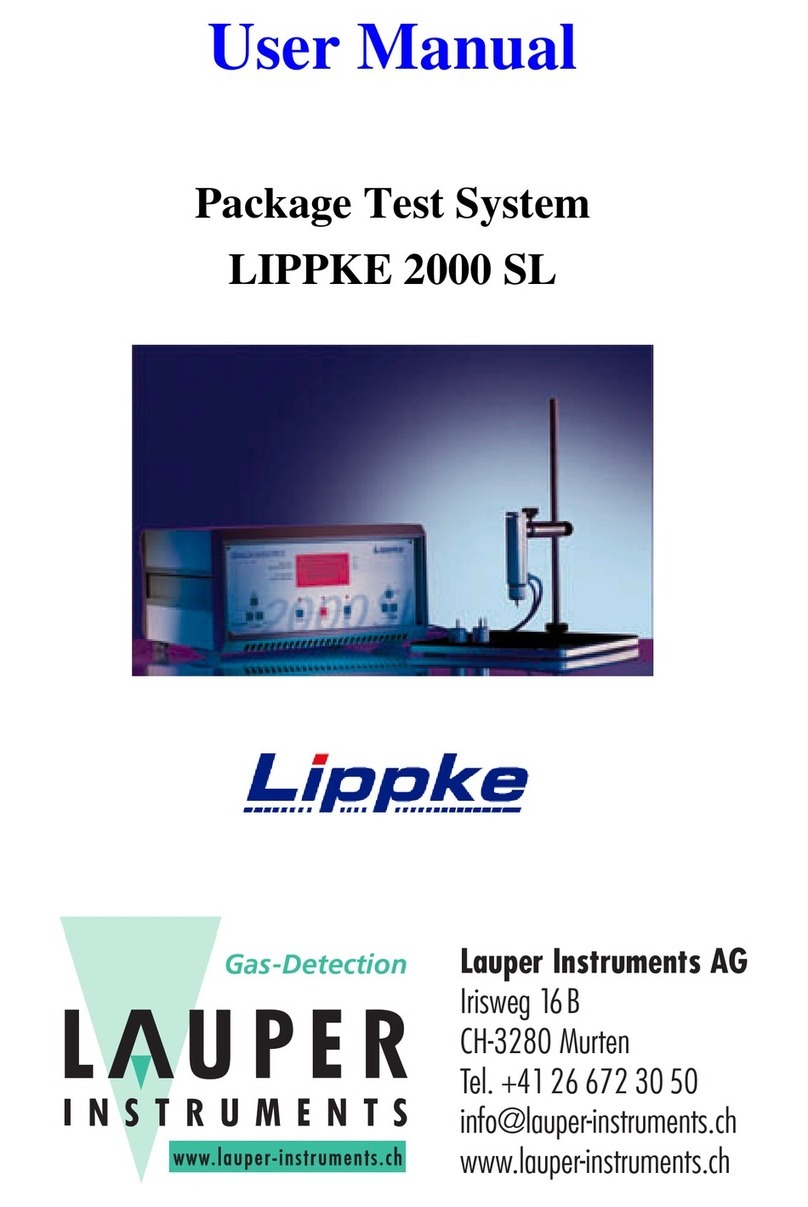
Lauper Instruments
Lauper Instruments LIPPKE 2000 SL user manual

PulseTech
PulseTech 490PT+ quick start guide
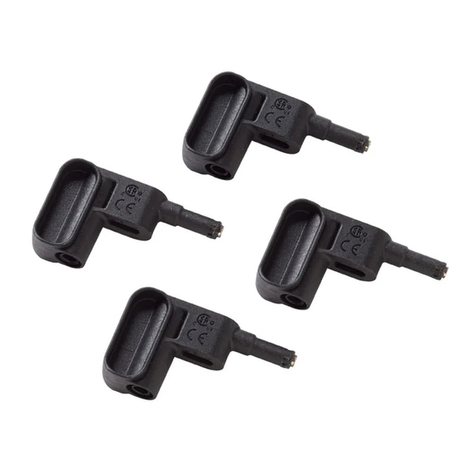
Fluke
Fluke MP1 instruction sheet
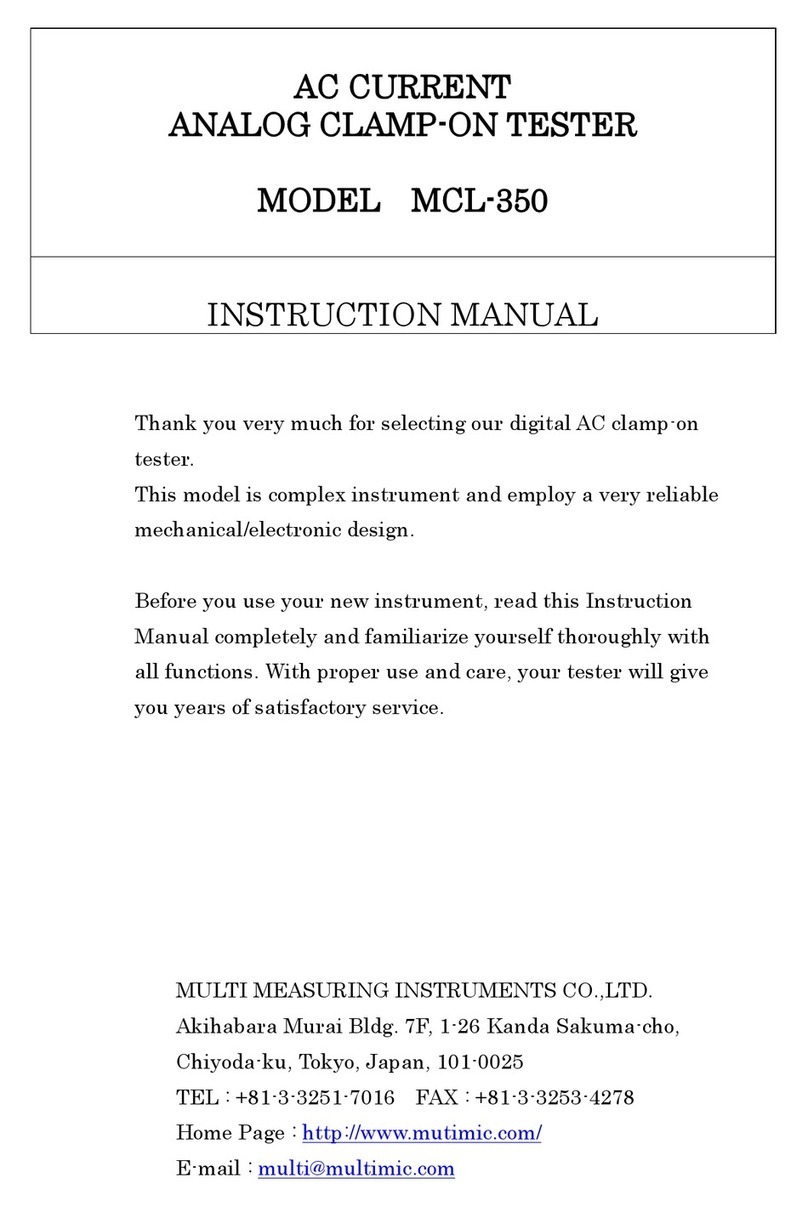
MULTI MEASURING INSTRUMENTS
MULTI MEASURING INSTRUMENTS MCL-350 instruction manual
